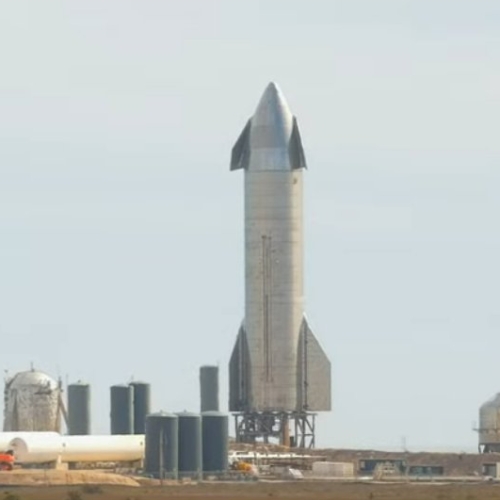Link here. The article by Eric Berger depends on many anonymous sources at Blue Origin, and suggests that the central reason the first launch of the company’s orbital New Glenn rocket has been delayed until 2022 at the earliest is because Jeff Bezos decided to have them build its biggest iteration first, rather than take smaller steps upward to that version.
[I]nstead of offering a waypoint between New Shepard and a massive orbital rocket, Bezos ultimately opted to jump right to the massive, 313-foot-tall version. “It’s like if NASA had gone straight from Alan Shepard to the Saturn V rocket, but then also had to make the Saturn V reusable,” one former Blue Origin employee said.
Instead of crawl-walk-run, Bezos asked his engineering team to begin sprinting toward the launch pad. The engineering challenges of building such a large rocket are big enough. But because New Glenn is so expensive to build, the company needs to recover it from the outset. SpaceX enjoyed a learning curve with the Falcon 9, only successfully recovering the first stage on the rocket’s 20th launch. Blue Origin engineers will be expected to bring New Glenn back safely on its very first mission.
The decision to skip the “walk” part of the company’s development has cost Blue Origin dearly, sources say. The company’s engineering teams, composed of smart and talented people, are struggling with mighty technical challenges. And there are only so many lessons that can be learned from New Shepard—the smaller rocket has 110,000 pounds of thrust, and New Glenn will have very nearly 4 million.
While I am certain there is some truth to this, the article also appears to me to be a sales job for Bob Smith, the CEO that Bezos hired in 2017 to run Blue Origin. There have been many rumors that he takes a more traditional approach to rocket development, which means no failures can be allowed and must be designed out from the beginning. In fact, the article hints at this, but then spins it to Smith’s favor.
Since Smith arrived in the fall of 2017, some employees have struggled with his leadership style and complained that he has acted too slowly, pushing Blue Origin to become more like a traditional aerospace company than a nimble new-space startup. But from Smith’s perspective, he’s trying to implement a culture transformation, from a hobby-shop atmosphere to that of a major aerospace contractor that can go out and win major NASA and Defense Department contracts.
The history of the past five years confirms the employees’ perspective, not Smith’s. Before he arrived Blue Origin was getting things built and launched, at a fast pace. After he took over that pace slowed to crawl, in all its projects.
In fact, I would say that Blue Origin’s problems really come as much from Smith as Bezos. When Bezos might have pushed to go big with New Glenn, Smith should have pushed back, and insisted they build the smaller version first. Instead, he went ahead, while also apparently changing the company so that it functioned more like the older big space contractors (Boeing, Lockheed Martin) that can’t get anything built quickly for a reasonable cost.
None of this bodes well for Blue Origin or New Glenn. Unless a massive management change is instituted, the company’s future does not look as bright as it should, considering the amount of money (billions) that Bezos is committing to it. All the money in the world will do you nothing if what you want to do is poorly planned and badly executed.









